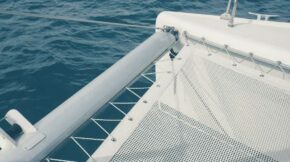Share
Stand up paddleboarding (SUP) extends a fun system to play on the water, with the additional perk of a full-body workout. As you stand at the top of your board, Stand up paddle boarding provides you a freakish vantage point for observing what’s down under the water and out on the horizon. Stand up paddleboarding is a type of sport that is getting famous rapidly. It is water support with a lot of fun. Water is fun right! People play this support in summer and enjoy it a lot.
A stand-up paddleboard is a very useful sport. It keeps you in the color of health on top of helping you examine the world. Maybe that is why the sport has achieved exponential popularity in many parts of the world.
Stand up paddleboard is an energizing fun activity for the whole family. It encourages you to enjoy a respite from the fatigues of this world as you play on the water. You cruise with no objective at the top of the priority list. Floating on water and blowing outside air that accompanies a great amount of fun, especially when you realize that you are in the group of dear loved ones.
Fun Techniques for Stand Up Paddleboard
There are three fun things you can do on stand up paddleboards.
1) Riding on Stand up Paddleboard
2) Balance
3) Falling and getting back on
How to ride on Stand up paddleboard?
- Stand beside the board in about two feet deep water. Deep enough so that the fins of the boat are not hitting the ground.
- Handle the board by the sides and ride onto the board in a kneeling position, just behind the middle point of the board.
- Put your hands on the edges of the board to stabilize it and move one foot at a time to replace your feet with your knee.
- Instead of standing up in one action, begin by lifting your chest up while keeping your knees curved. Once your chest is upright, stretch your legs to stand up.
There you go! You are standing on a paddleboard to have all the fun.
How to balance on a stand-up Paddleboard?
- Place your feet so they are parallel, about one foot of distance apart, and centered amid the edges of the board.
- Maintain your toes aimed forward, knees slightly curved and your back upright.
- Hold your head and shoulders patterned and straight, and shift your weight by moving your hips.
- Your gaze should be level at the horizon. Try not to stare at your feet.
Once you have maintained your balance on a stand-up paddleboard, you are ready to surf as much as you can.
Falling and getting back on
In contempt of your best attempts to stay balanced on your board, you’re going to fall in the water at some point. Even expert paddlers take the fall from time to time, so if you’re considering a little wobbly, don’t bother about it and learn that SUP is a watersport, so it’s okay to get wet.
- Aim yourself to the side, so that you plunge into the water and not onto the board itself. Stumbling onto the board is more inclined to make an injury.
- Try to cling onto your paddle while falling. If you get segregated from it, recover your board first and get back on, then cruise with your hands to get the paddle.















